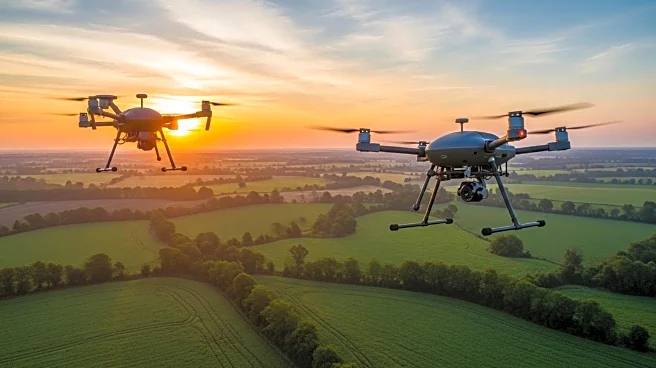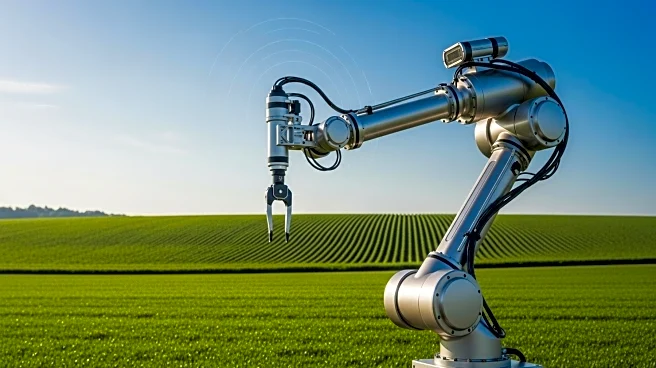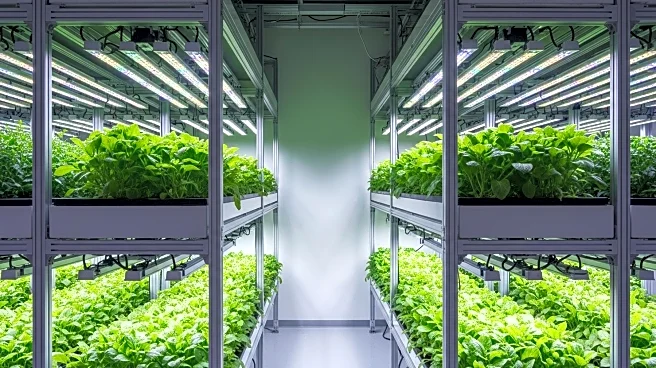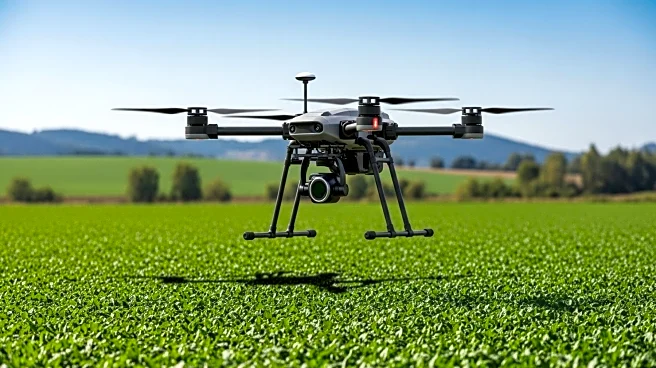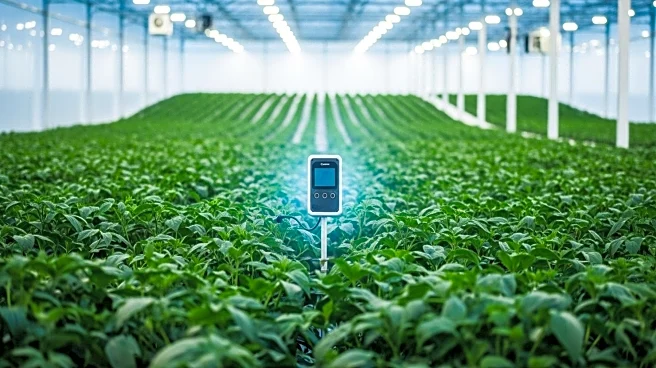What's Happening?
The integration of robotics in poultry farming is part of a larger trend towards agricultural automation, which is expected to see significant growth. The global agricultural robotics market is projected to reach $84.19 billion by 2032, driven by the need for automation and sustainable farming practices. Robotics in poultry farming includes systems for automated feeding, health monitoring, and cleaning, which help reduce manual labor and improve livestock welfare. Developed countries like the United States, Canada, and European nations are at the forefront of this sector due to persistent labor shortages and strong research and development activities.
Why It's Important?
The adoption of robotics in poultry farming is crucial for addressing labor shortages and increasing efficiency in the agricultural sector. By automating repetitive tasks, farms can improve productivity and animal welfare while reducing the reliance on manual labor. This shift is particularly important in developed countries where labor shortages are more pronounced. The growth of the agricultural robotics market also reflects a broader trend towards precision farming, which aims to increase yields and reduce waste through technology. As the demand for food continues to rise, the role of robotics in agriculture will become increasingly vital.
What's Next?
As the agricultural robotics market continues to grow, further advancements in technology are expected to enhance the capabilities of these systems. The development of more sophisticated robots that can perform a wider range of tasks will likely drive further adoption. Additionally, the expansion of the Robot-as-a-Service model could make these technologies more accessible to smaller farms, reducing the financial barriers to entry. Policymakers and industry leaders will need to address challenges such as high initial costs and regulatory issues to ensure the widespread adoption of robotics in agriculture.
Beyond the Headlines
The integration of robotics in agriculture raises important ethical and social considerations. The potential displacement of workers due to automation is a significant concern, and there is a need for policies that support workforce transition and retraining. Additionally, the use of robotics in farming could lead to changes in rural communities and the agricultural landscape. As technology continues to evolve, it will be important to balance the benefits of automation with the need to preserve traditional farming practices and support local economies.

